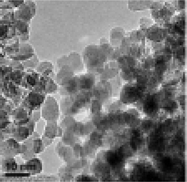Low temperature synthesis of monodisperse nanoscaled ZrO2 with a large specific surface area†
Abstract

Maintenance work is planned for Wednesday 1st May 2024 from 9:00am to 11:00am (BST).
During this time, the performance of our website may be affected - searches may run slowly and some pages may be temporarily unavailable. If this happens, please try refreshing your web browser or try waiting two to three minutes before trying again.
We apologise for any inconvenience this might cause and thank you for your patience.
* Corresponding authors
a
Institut für Anorganische Chemie und Analytische Chemie der Johannes Gutenberg-Universität, Duesbergweg 10-14, 55099 Mainz, Germany
E-mail:
tremel@uni-mainz.de
Fax: (+49) 6131-39-25605
Tel: (+49) 6131-39-25135
b Bundesanstalt für Materialforschung und-prüfung (BAM), Unter den Eichen 87, 12205 Berlin, Germany
c Institut für Geowissenschaften, Becherweg 21, 55099 Mainz, Germany
d Institut für Physikalische Chemie der Johannes Gutenberg-Universität, Welderweg 11, 55099 Mainz, Germany

 Please wait while we load your content...
Something went wrong. Try again?
Please wait while we load your content...
Something went wrong. Try again?
N. Zink, F. Emmerling, T. Häger, M. Panthöfer, M. N. Tahir, U. Kolb and W. Tremel, Dalton Trans., 2013, 42, 432 DOI: 10.1039/C2DT12496C
To request permission to reproduce material from this article, please go to the Copyright Clearance Center request page.
If you are an author contributing to an RSC publication, you do not need to request permission provided correct acknowledgement is given.
If you are the author of this article, you do not need to request permission to reproduce figures and diagrams provided correct acknowledgement is given. If you want to reproduce the whole article in a third-party publication (excluding your thesis/dissertation for which permission is not required) please go to the Copyright Clearance Center request page.
Read more about how to correctly acknowledge RSC content.
 Fetching data from CrossRef.
Fetching data from CrossRef.
This may take some time to load.
Loading related content
